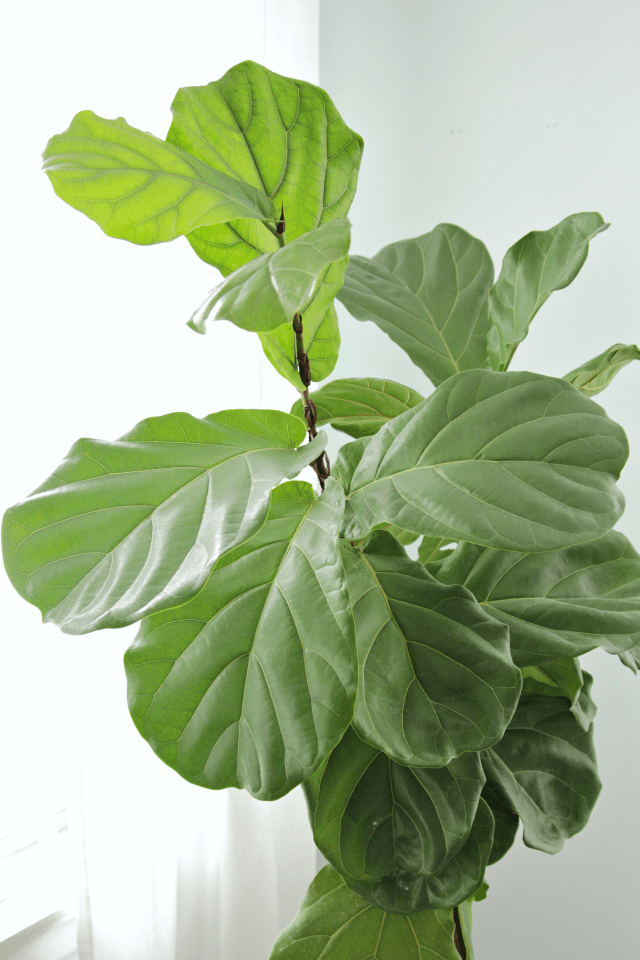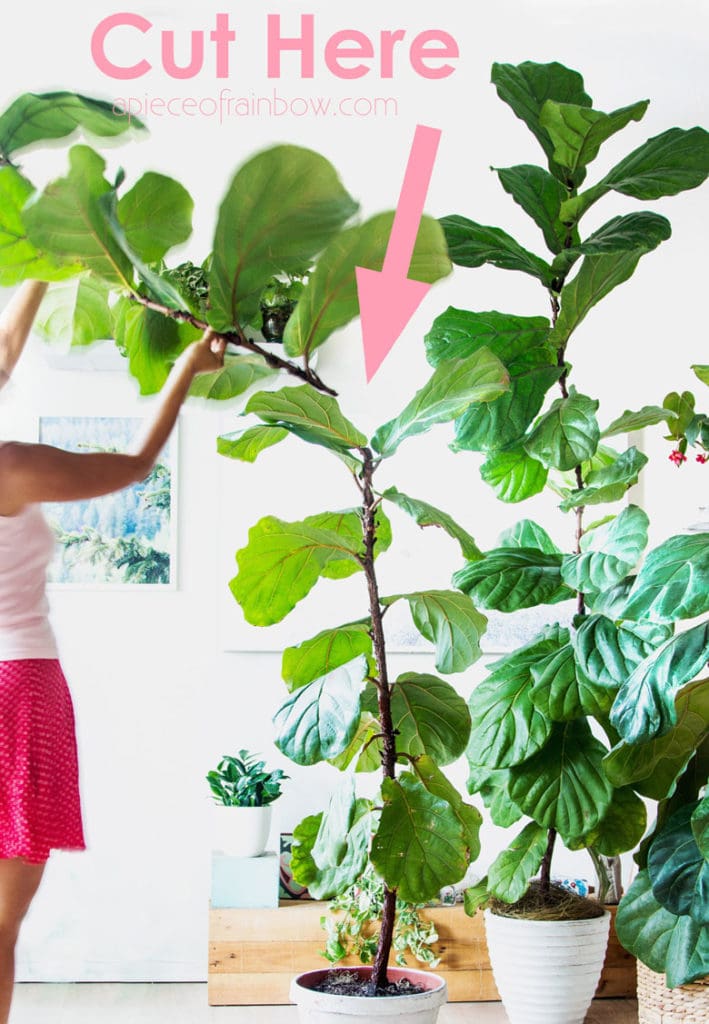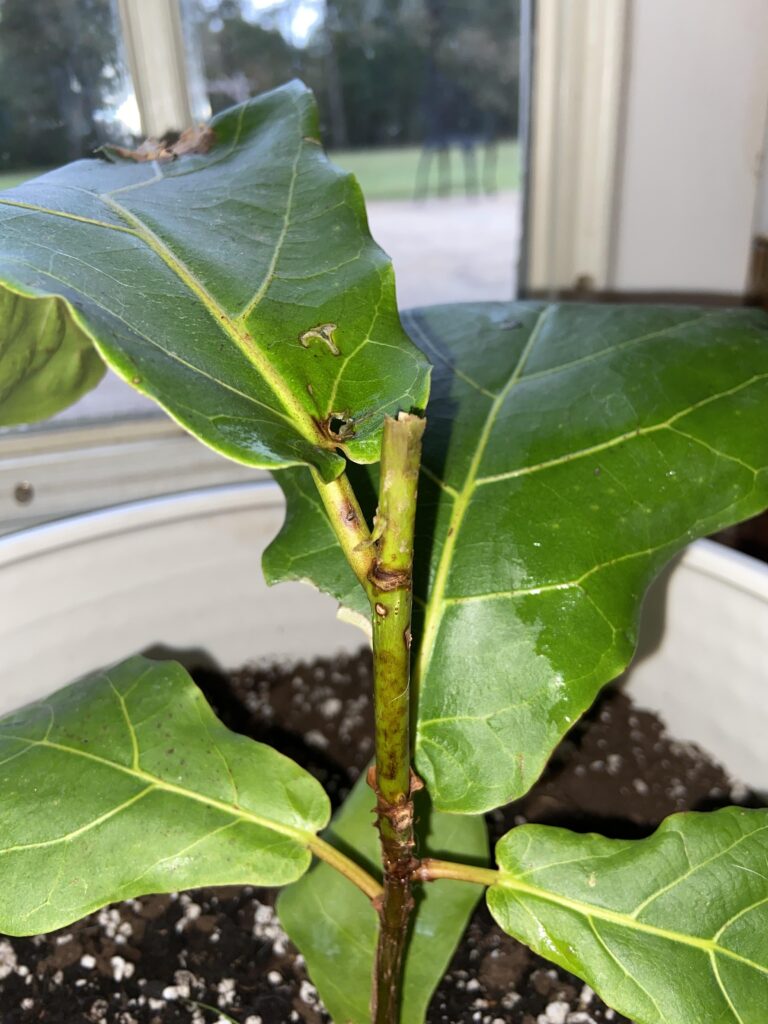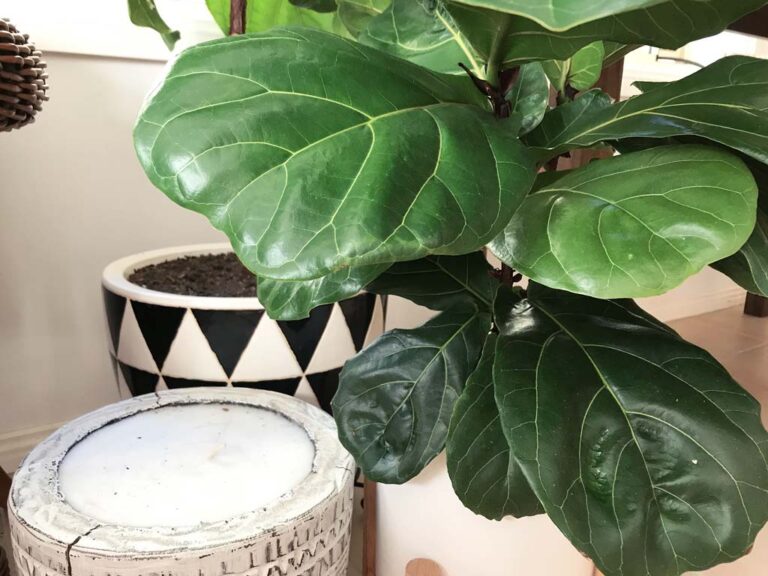Pruning Fiddle Leaf Fig Trees
Pruning is essential for maintaining the health and appearance of your fiddle leaf fig tree. Proper trimming promotes new growth and prevents potential issues.
Importance of Pruning
Pruning your fiddle leaf fig tree is crucial for several reasons:
- Health Maintenance: Pruning helps remove damaged leaves and stems that can drain resources and spread infections.
- Size Control: Healthy fiddle leaf figs can grow several inches or even a few feet each year, making pruning necessary to prevent them from becoming too tall or too large for their location (Fiddle Leaf Fig Plant Resource).
- Balancing Growth: Regular trimming ensures the plant remains balanced and symmetrical, reducing the likelihood of it becoming lopsided.
- Decreasing Crowded Areas: Removing excess stems and leaves decreases crowded areas, allowing more light to reach all parts of the plant.
- Aesthetic Shaping: Pruning allows for shaping the plant to maintain an attractive appearance.
For additional tips on fiddle leaf fig tree care, visit our page on fiddle leaf fig tree care.
Signs for Pruning
Identifying the right time to prune your fiddle leaf fig tree involves observing the following signs:
- Damaged Leaves: Brown, yellow, or unusable leaves should be removed to prevent them from draining the plant’s resources.
- Excessive Height: If your fiddle leaf fig is growing too tall, pruning can help manage its height.
- Unbalanced Appearance: If the plant starts to look lopsided, it’s time to prune back the longer branches to promote balanced growth.
- Crowded Areas: Dense, crowded areas with insufficient light reaching the inner leaves indicate the need for pruning.
- Weak or Stunted Growth: Pruning can stimulate growth in weak or stunted areas of the plant.
Recognizing these signs ensures that the plant remains healthy and visually appealing. For more details on potential problems with fiddle leaf figs, visit our page on fiddle leaf fig problems.
| Sign | Description |
|---|---|
| Damaged Leaves | Brown, yellow, or unusable leaves |
| Excessive Height | Plant is growing too tall |
| Unbalanced Appearance | Lopsided, uneven growth |
| Crowded Areas | Dense, poorly lit sections |
| Weak or Stunted Growth | Areas with little or no growth |
Regular pruning, combined with proper watering and fertilizing practices, ensures your fiddle leaf fig remains a healthy and attractive addition to your indoor garden.
Timing and Techniques
Effective trimming of a fiddle leaf fig tree involves understanding the optimal timing and employing the right pruning methods.
Best Time for Pruning
The ideal time for pruning and shaping a fiddle leaf fig tree is in the spring or early summer. During these periods, there is ample light, which is crucial for the plant’s recovery and promoting new growth. This timing ensures that the tree has the necessary conditions to thrive post-pruning.
Pruning Methods
Pruning methods for a fiddle leaf fig tree vary depending on whether the goal is to stimulate new growth or shape the plant.
- Topping the Main Stem: Cutting the top of the main stem encourages new growth below the cut, resulting in a bushier plant. This method is beneficial for shaping taller trees or promoting fuller growth at the base.
- Requirement: Only conduct this pruning for lateral growth when the tree is at least five feet tall and well-established.
- Lateral Growth Pruning: To encourage branching outwards, prune the stem at the desired height where branches are to grow. This involves cutting the stem to activate dormant buds below the cut line. This method redirects growth hormone (auxin) to the nearest buds, resulting in new branches.
- Ideal Technique: For the best results, cut above a cluster of leaves or closely together leaf groups to activate multiple dormant buds.
Incorporating these methods will help ensure your fiddle leaf fig tree thrives. For comprehensive instructions on fiddle leaf fig care, including fiddle leaf fig tree watering and fiddle leaf fig tree branching, explore our related articles. By adopting the best practices for pruning, gardeners can maintain healthy, vibrant fiddle leaf fig trees.
Pruning Tips and Guidelines
Maintaining a healthy and aesthetically pleasing fiddle leaf fig tree involves regular pruning. Here are some essential tips and guidelines to keep in mind.
Avoiding Over-Pruning
Over-pruning can shock the plant and stunt its growth. It’s essential to prune conservatively:
- Limit Leaf Removal: It is recommended not to remove more than 10 leaves at a time to prevent the plant from going into shock (The Spruce).
- Balanced Pruning: Healthy fiddle leaf fig trees grow several inches or even feet each year. Pruning ensures the plant stays balanced and doesn’t become lopsided (Fiddle Leaf Fig Plant Resource).
- Height Control: Pruning helps to keep the plant at a manageable height and encourages a more compact and robust growth. Top leaves should be at least 8 to 10 inches below the ceiling (Fiddle Leaf Fig Plant Resource).
Post-Pruning Care
Pruning is just the beginning of maintaining a healthy fiddle leaf fig tree. After you’ve pruned, proper care is crucial for encouraging new growth and ensuring the plant recovers well.
- Provide Ample Light: Ensure the plant gets plenty of indirect sunlight to promote new growth.
- Fertilization: Use a balanced fiddle leaf fig tree fertilizer to give the plant the nutrients it needs to heal and grow.
- Watering: After pruning, maintain a consistent watering schedule. Over-watering can lead to issues like root rot while under-watering can cause brown edges on the leaves.
- Encourage Branching: After pruning, the plant will often split its branch where pruned, resulting in two branches where one used to be (Fiddle Leaf Fig Plant Resource). This helps create a fuller and more bushy appearance.
By following these tips and guidelines, you can ensure that your fiddle leaf fig tree remains healthy, beautiful, and perfectly shaped. For further information on fiddle leaf fig tree care, visit our fiddle leaf fig tree care guide.
Encouraging Growth
To maintain a healthy and attractive Fiddle Leaf Fig tree, it is essential to encourage new growth and proper branching. Through strategic techniques such as notching and pinching, a gardener can significantly influence the appearance and structure of their plant.
Branching Techniques
Encouraging a Fiddle Leaf Fig tree to branch can help in shaping the plant to your preference. Pruning is a highly effective method for promoting new branch growth. By cutting the stem at the desired height, you activate dormant buds below the cut. This redirects the growth hormone auxin to these buds, encouraging the formation of new branches. The pruned portion can potentially be used for propagation to grow a new plant Dossier Blog.
Pruning Tips:
- Prune when the plant is taller than the intended height for new branches.
- Pruning above a cluster of leaves can activate multiple dormant buds.
- Ensure the cut is made cleanly and at an angle to minimize damage to the plant.
| Purning Time | Dormant Bud Activation |
|---|---|
| Above cluster of leaves | High |
| Single leaf node | Moderate |
For more detailed information on effective pruning practices, visit our article on fiddle leaf fig tree branching.
Notching and Pinching
Notching is a technique used to encourage a Fiddle Leaf Fig to grow new branches without cutting off substantial portions of the plant. This method involves making small cuts or “notches” on the stem or trunk, which stimulates growth in specific areas (Dossier Blog).
Notching Tips:
- Make a diagonal cut about a third deep into the trunk, close to a leaf node.
- Alternatively, create two closely spaced cuts and remove a small wedge of the stem.
- Perform notching on mature or woody stems for better results.
Notching often yields mixed results; hence multiple notches might be necessary to achieve desired branching.
Pinching is another method to encourage branching by removing the top part of the plant. By pinching off the top few leaves or the growing tip, the growth hormone is redirected to the lateral buds below. This can lead to the development of multiple branches.
| Technique | Effectiveness | Procedure |
|---|---|---|
| Notching | Moderate to High | Make small cuts near nodes |
| Pinching | Moderate | Remove top few leaves or growing tip |
To learn more about advanced notching and pinching techniques and how to care for your plant post-pruning, explore our fiddle leaf fig tree care.
Understanding and implementing these methods can help you maintain a healthy, well-branched Fiddle Leaf Fig tree. For additional advice on addressing common issues like fiddle leaf fig tree brown edges and fiddle leaf fig tree watering, check our other resources.




